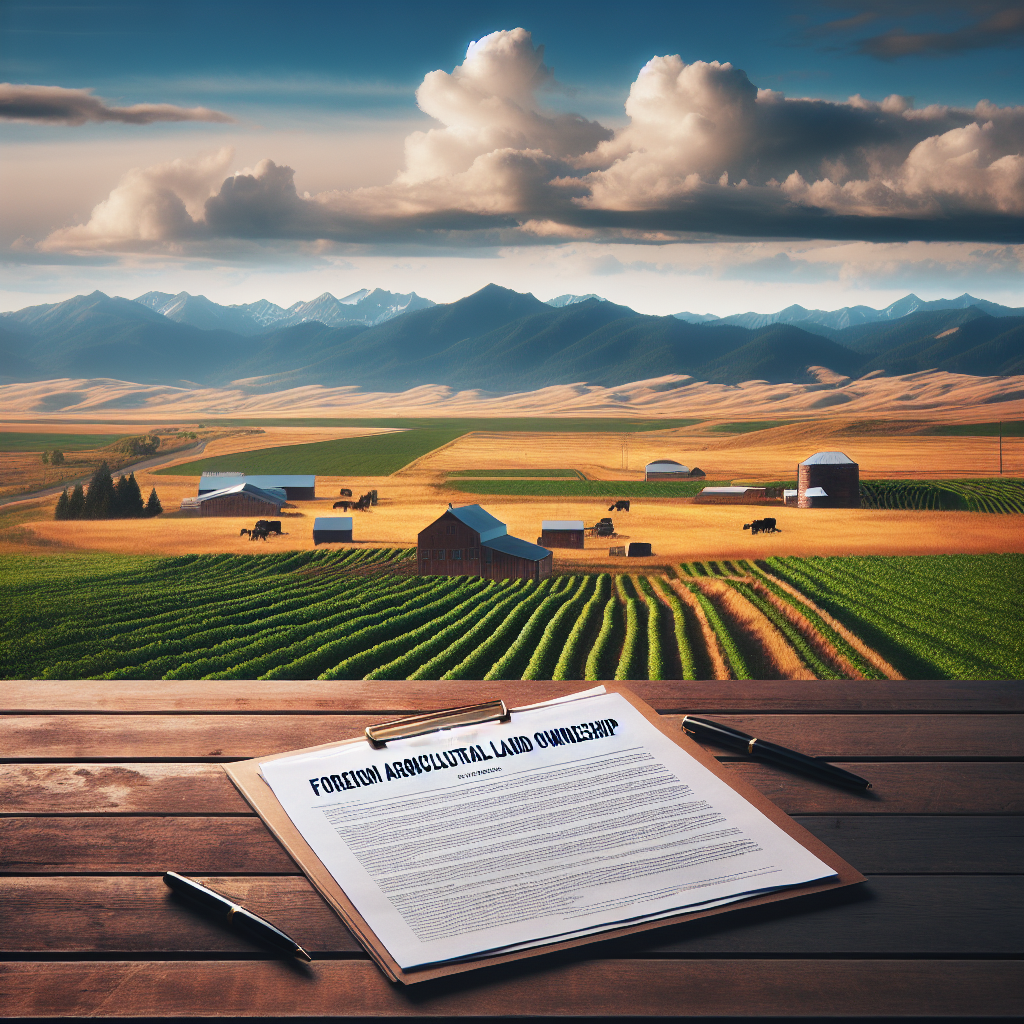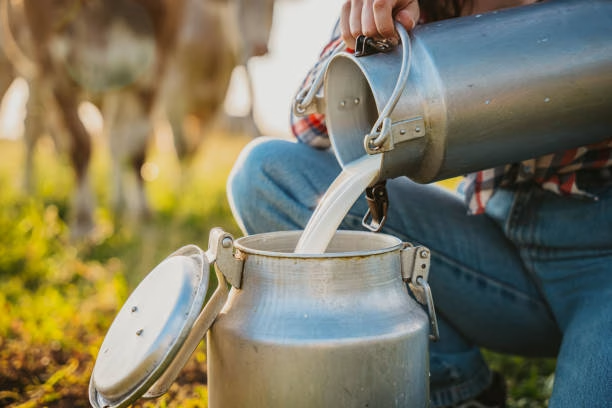Uncover the regulatory pitfalls lurking in dairy farming. Are you on top of the compliance issues that could affect your herd’s bottom line? Learn the details here.
Summary: The U.S. dairy farming industry is regulated by the FDA, USDA, and state-level departments of agriculture to ensure the safety and quality of milk and dairy products. The FDA sets pasteurization requirements and controls contaminant levels, while the USDA conducts inspections, grading, marketing help, and national requirements through its Dairy Program. State-level departments have their own rules and agencies responsible for dairy production, often with additional requirements such as licensure and local health codes. Milk quality is a statutory requirement, and understanding specific requirements can protect dairy companies from severe fines. The Pasteurized Milk Ordinance (PMO) sets strict somatic cell count, bacterial levels, and antibiotic residue limits. Labeling dairy products can be challenging, but following the USDA’s National Organic Program (AMS USDA) certifies agricultural operations do not use synthetic pesticides, hormones, or genetically modified organisms. Nutritional labeling is crucial for dairy product compliance. Regular audits, staff training, and staying updated with legislation are essential for dairy farms to reduce risks, maintain high standards, and focus on producing high-quality milk.
- Regulations are Extensive: From local to federal levels, staying compliant requires knowing a wide range of rules.
- Milk Quality Matters: Adhering to quality standards isn’t just about pride in your product—it’s a regulatory requirement.
- Labeling Requirements: Your product labels must meet specific criteria to avoid penalties.
- Testing Procedures are Crucial: Regular product testing ensures compliance and safety, which benefits your farm store sales.
- Stay Updated: Regulations can change; keeping informed helps you stay ahead of compliance issues.

How can a little regulatory error lose your dairy business? It’s time to get serious about the regulations that govern your operations. Noncompliance may result in significant penalties, shutdowns, and reputational harm. For instance, a single example of selling milk with a high somatic cell count can lead to a loss of consumer trust and a damaged reputation. Shutdowns due to noncompliance can disrupt your operations and lead to financial losses. Keeping up with laws isn’t just good practice; it’s necessary for survival and development. Many farmers fall into traps that may be easily avoided with proper effort. Do not take this lightly.
Understanding the Regulatory Maze of Dairy Farming in the U.S.
Understanding the intricate regulatory maze of dairy farming in the United States may be challenging. Still, it’s a crucial step toward ensuring the safety and quality of milk and dairy products. This knowledge empowers you to navigate the system with confidence and control.
Let’s break down the key regulatory bodies and their roles to give you a clearer picture:
- Food and Drug Administration (FDA)
The FDA plays a pivotal role in ensuring the safety of food items such as milk and dairy. It establishes pasteurization requirements and controls allowed contaminant levels, Providing a reassuring layer of safety for your products. - United States Department of Agriculture (USDA)
The USDA, primarily via its Dairy Program, significantly contributes to the quality of dairy products. It conducts inspections and grading, provides marketing help, and guarantees national requirements are met. The USDA also funds research and offers incentives that might affect your bottom line. - State-Level Departments of Agriculture
Each state has its own rules and agencies in charge of dairy production. These state-level authorities often have additional requirements, such as licensure, specific testing protocols, and local health codes. For example, dairy farms are required to obtain a Grade A milk license in California, while in Wisconsin, farms must adhere to the state’s strict standards for somatic cell count. They conduct frequent inspections to verify that farms comply with federal and state rules.
Tackling these legal requirements may seem burdensome, but knowing them is critical to your dairy operation’s success. Maintaining compliance ensures you produce high-quality milk and safe, marketable dairy products.
Milk Quality: More Than Pride—It’s a Regulatory Necessity
Milk quality is more than simply a source of pride; it is a statutory requirement. Understanding particular requirements might help protect your dairy company from severe fines. The Pasteurized Milk Ordinance (PMO) (FDA) establishes strict somatic cell count, bacterial levels, and antibiotic residue limits.
- Somatic Cell Count (SCC) Limits: The PMO establishes a maximum SCC of 750,000 cells/mL for Grade “A”milk. Keeping your SCC below this standard is critical for avoiding regulatory action and maintaining excellent milk quality.
- Bacterial Standards: The PMO stipulates that Grade “A” raw milk for pasteurization has no more than 100,000 bacteria/mL before blending with milk from other producers and 300,000 bacteria/mL after that. These guidelines ensure the safety and quality of milk for customers.
- Antibiotic Residue Testing: The level of antibiotics in milk is regularly checked. According to PMO rules, all bulk milk tankers are tested for Beta-lactam medication residues, with a stringent zero-tolerance for any detected quantities. Compliance with these laws requires adhering to withdrawal times for treated animals.
Understanding and adhering to these PMO requirements ensures compliance with federal laws and improves the reputation and safety of your milk products.
Navigating the Labeling Minefield
Labeling dairy products might seem like negotiating a minefield with its many restrictions. If you want the desired “organic” designation, follow the USDA’s National Organic Program (AMS USDA). This certifies that your agricultural operations do not use synthetic pesticides, hormones, or genetically modified organisms (GMOs). Speaking of GMOs, non-GMO statements must be supported, and it doesn’t hurt to display third-party certification to back them up. Third-party certification, such as from the Non-GMO Project, provides independent verification of your product’s non-GMO status, which can build consumer trust and ensure compliance with labeling laws.
Nutritional labeling? This is when the FDA steps in. Every dairy product label must provide correct information about essential nutrients such as total fat, saturated fat, cholesterol, and calcium levels (FDA Labeling Requirements). Mislabeling may result in severe penalties. Thus, precision is not optional.
Adhering strictly to these labeling rules is a legal requirement and a responsibility you owe your customers. It demonstrates your commitment to transparency and quality, both locally and abroad.
Unlocking the Secrets of Dairy Product Testing for Your Farm Store Sales
Every farm must legally submit a bulk milk tank sample for testing with each shipment. Many cooperatives have milk trucks collect and transport this sample to a lab for analysis, generally located at the production site or elsewhere.
Most dairy farms use this approach, although submitting a bulk tank sample to a separate lab may provide more valuable data. It never hurts to try new things. Third-party laboratories analyze milk components, somatic cell count, antibiotics, and additional water. These tests assure a safe product and impact cooperative payments to farmers.
For farms that offer additional dairy products, completed product testing is critical. This includes evaluating heavy cream, ice cream, yogurt, powdered goods, butter, and cheese. Labs may conduct specific testing such as coliform, preliminary incubation, and lab pasteurization. These tests provide a detailed look at a milk sample. Whether you submit a sample or have a DHI field technician come, rigorous testing is essential for compliance and quality assurance.
How to Keep Your Dairy Farm Compliant and Thriving
Running a dairy farm requires negotiating a complicated web of rules, but being compliant can be simple. Here’s how you can keep things smooth and above board:
- Conduct Regular Audits: Set up an internal audit program to check your procedures regularly and verify you comply with FDA, USDA, and state laws. An audit might help you uncover possible areas of concern before they become problems. For example, one successful Wisconsin farm discovered that quarterly audits increased compliance and improved milk quality, lowering bacterial contamination by 20%.
- Invest in Staff Training: Educate your staff on current dairy farming legislation and best practices. Comprehensive training programs may make a huge impact. For example, a big dairy farm in California introduced biannual training sessions, resulting in a 15% reduction in infractions recorded during state inspections.
- Stay Updated with Legislation: Track changes in state and federal regulations. Stay updated by subscribing to industry publications, attending conferences, and joining local dairy groups. Over the last five years, a dairy farm in New York has maintained a spotless compliance record by vigilant monitoring of legislation amendments.
By incorporating these ideas into your operations, you can reduce risks, maintain high standards, and concentrate on what you do best: producing high-quality milk.
The Bottom Line
At the core of successful dairy farming is a thorough grasp and adherence to a complicated labyrinth of rules. Navigating the FDA, USDA, and numerous state-level laws is critical to guaranteeing high-quality milk and dairy products. It’s more than simply compliance; it’s about keeping your customers’ confidence and preserving your company. Regulatory compliance is critical to maintaining dairy products safe and marketable while preventing expensive contamination. Consider doing frequent compliance checks and regularly training your workforce on the most recent legislation. After all, a well-informed farm is a productive farm. Here’s to your prosperous dairy business!














